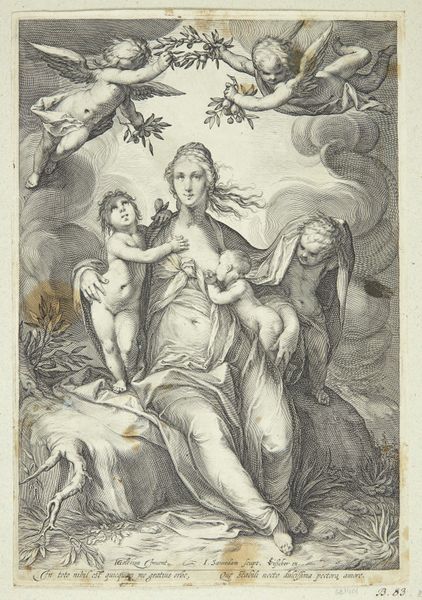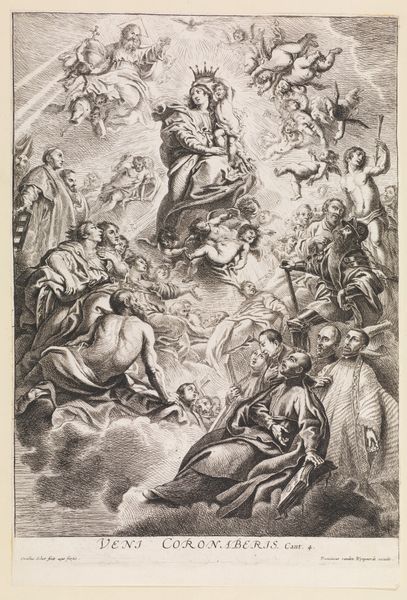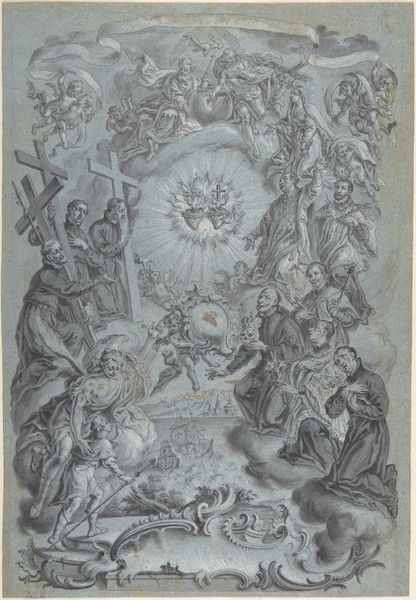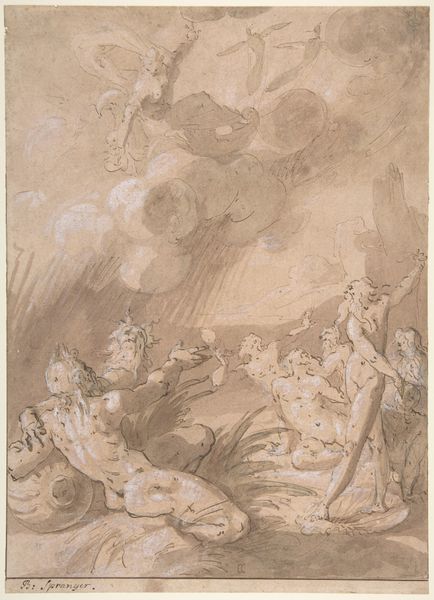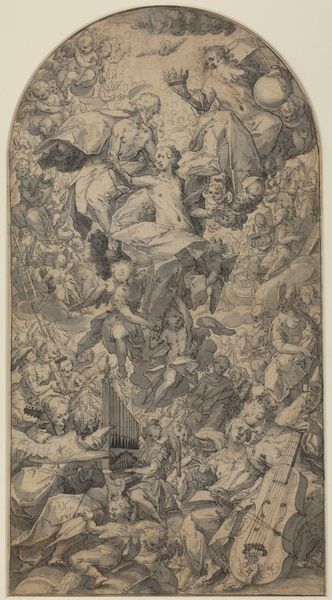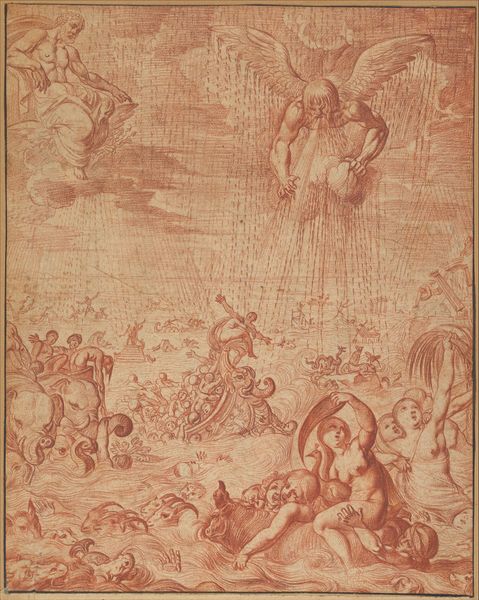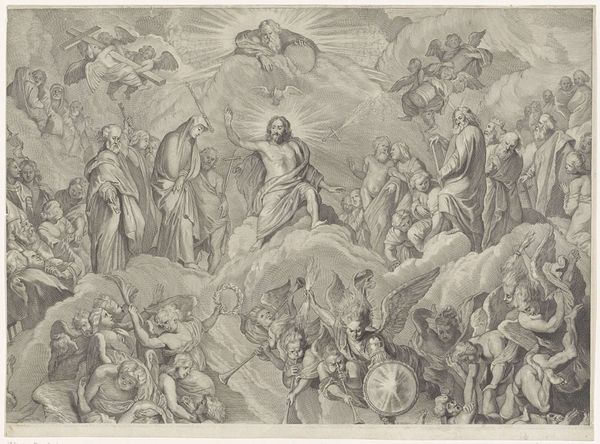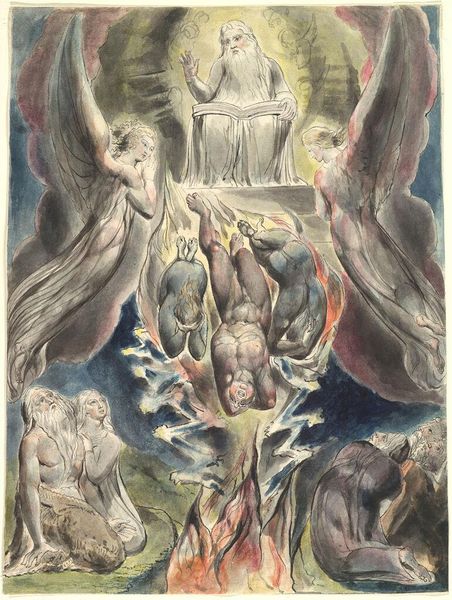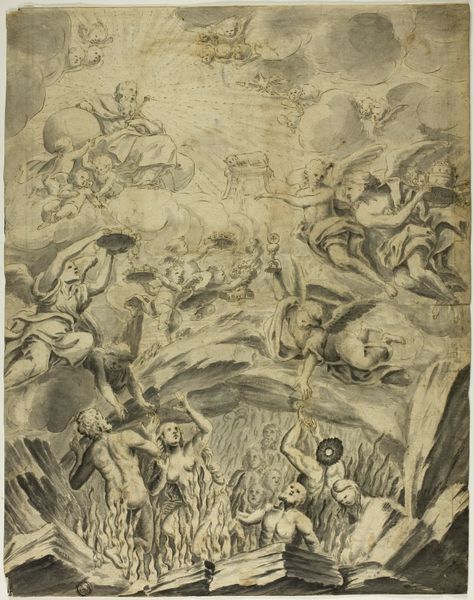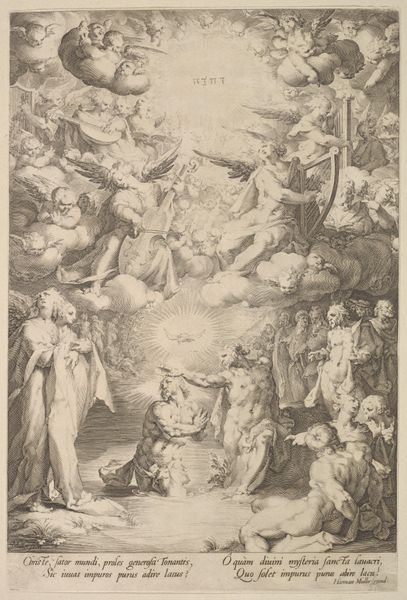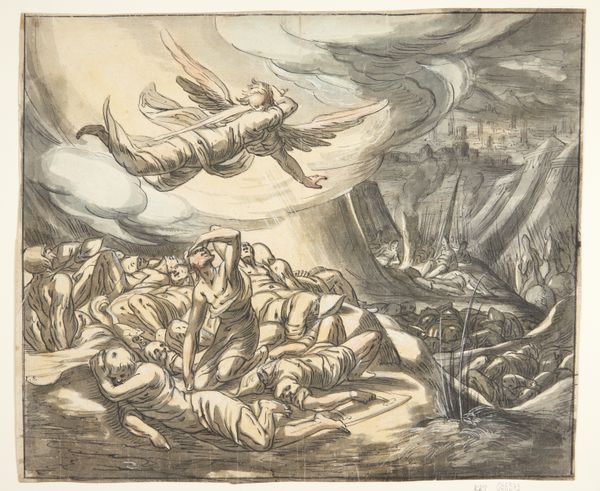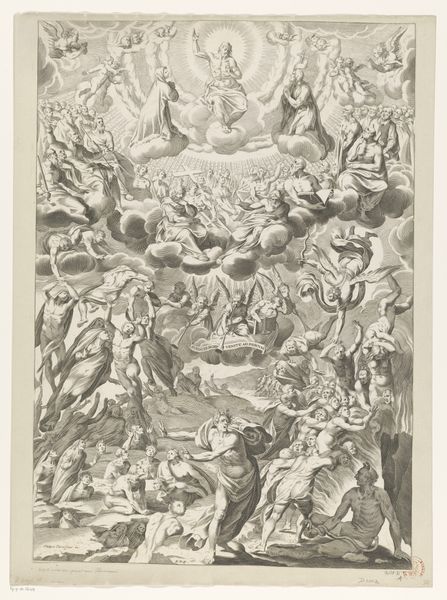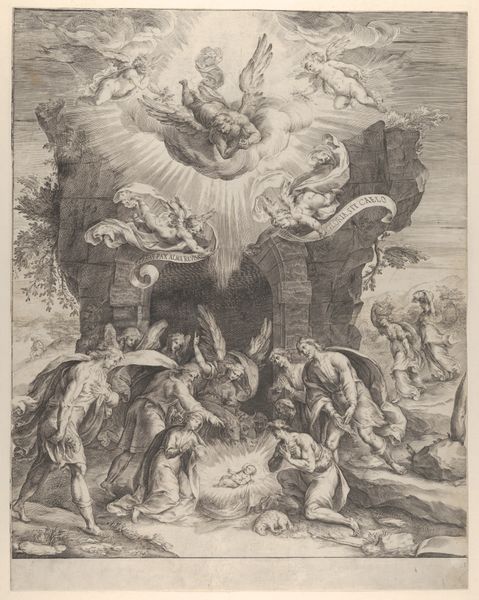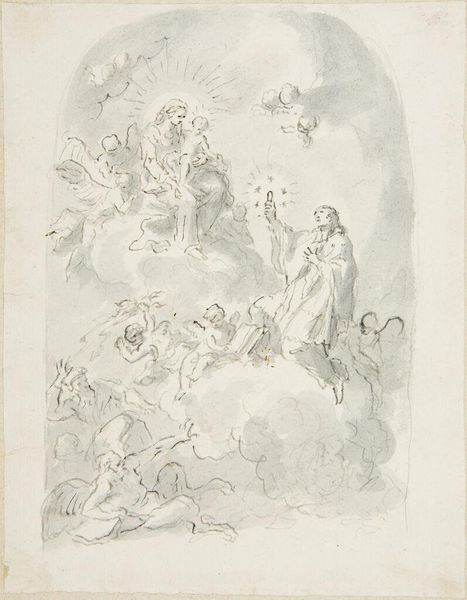
Maria en kind op de wolken te midden van engelen en cherubijnen 1575 - 1600
0:00
0:00
painting, watercolor
#
portrait
#
allegory
#
painting
#
figuration
#
11_renaissance
#
watercolor
#
watercolour illustration
#
watercolor
Dimensions: height 272 mm, width 197 mm
Copyright: Rijks Museum: Open Domain
Curator: This watercolor artwork at the Rijksmuseum, likely created between 1575 and 1600, is titled "Maria en kind op de wolken te midden van engelen en cherubijnen"—or, in English, "Mary and Child in the Clouds Surrounded by Angels and Cherubs." Editor: It’s overwhelmingly saccharine, isn't it? A complete heavenly host! And all rendered in such soft, diluted color. What strikes me most is the dizzying sense of elevation—floating up above what looks like a tiny townscape below. Curator: Yes, and that positioning creates an immediate visual hierarchy, reinforcing Mary's spiritual supremacy and proximity to the divine. Notice how the artist, though unknown, uses familiar visual codes: the clustering of cherubs around the central figures suggests both protection and adoration. It’s pure, almost standardized iconography. Editor: Standardized but effective. Consider the broader function of images like these during the Renaissance, particularly their power in devotional practices. Did the proliferation of these sentimental, albeit somewhat formulaic, portrayals actually help bolster or, paradoxically, dilute genuine spiritual fervor within society at large? Curator: That's the fascinating question, isn’t it? Were these images primarily about sincere piety, or also about projecting power through readily understood cultural symbols? Mary as the compassionate mother, but also as Queen of Heaven—it's a potent duality, and visually, it’s reinforced by the encircling stars—a common Marian symbol—along with the very positioning of Christ in her protective arms. Editor: And that placement anchors not just theological but socio-political implications, too. In what ways might such artistic renderings have legitimized existing societal structures by divine will, casting them within a grand cosmic order? Curator: Precisely! Consider this: though aesthetically pretty, this piece also acts as a concentrated visual argument. Anonymous or not, the creator harnessed common symbolism of the time to support deeply held beliefs and ideas. Editor: A belief system visually reified. Gives me pause to contemplate today’s visual rhetoric! Curator: Exactly. Art that on the surface is devotional, but is implicitly political.
Comments
No comments
Be the first to comment and join the conversation on the ultimate creative platform.
